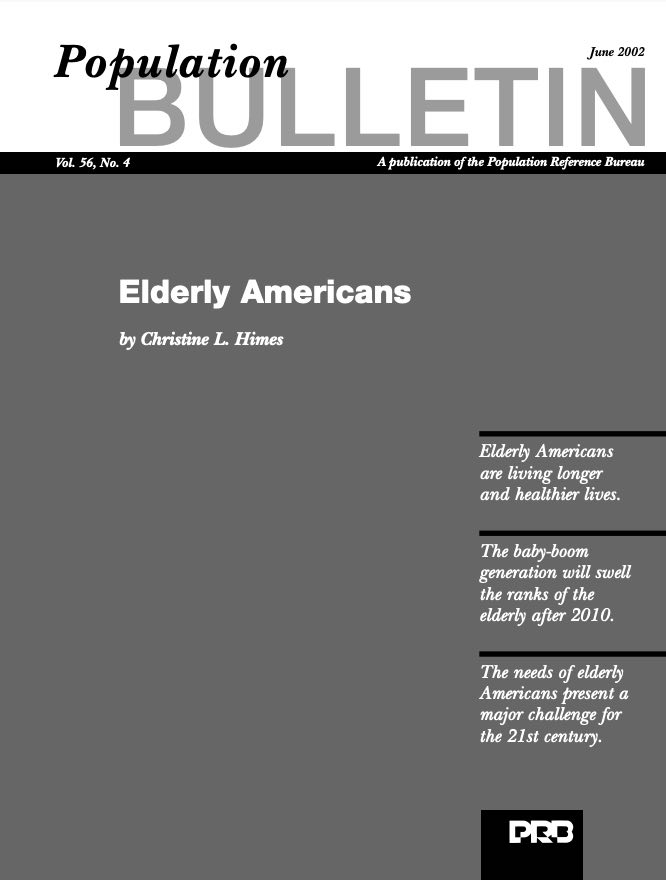
Elderly Americans
Product: Population Bulletin, vol. 56, no. 4
Author: PRB
Date: December 1, 2001
Focus Areas
The United States is in the midst of a profound demographic change: the rapid aging of its population. The 2000 Census counted nearly 35 million people in the United States 65 years of age or older, about one of every eight Americans. By 2030, demographers estimate that one in five Americans will be age 65 or older, which is nearly four times the proportion of elderly 100 years earlier, in 1930. The effects of this older age profile will reverberate throughout the American economy and society in the next 50 years. Preparing for these changes involves more than the study of demographic trends; it also requires an understanding of the growing diversity within the older population.
The aging of the U.S. population in the next 20 years is being propelled by one of the most powerful demographic forces in the United States in the last century: the “baby boom” cohort, born between 1946 and 1964. This group of 76 million children grabbed media attention as it moved toward adulthood—changing school systems, colleges, and the workplace. And, this same group of people will change the profile and expectations of old age in the United States over the next 30 years as it moves past age 65. The potential effects of the baby boom on the systems of old-age assistance already are being evaluated. This cohort’s consumption patterns, demand for leisure, and use of health care, for example, will leave an indelible mark on U.S. society in the 21st century. Understanding their characteristics as they near older ages will help us anticipate baby-boomers’ future needs and their effects on the population.
Until the last 50 years, most gains in life expectancy came as the result of improved child mortality. The survival of larger proportions of infants and children to adulthood radically increased average life expectancy in the United States and many other countries over the past century. Now, gains are coming at the end of life as greater proportions of 65-year-olds are living until age 85, and more 85-year-olds are living into their 90s. These changes raise a multitude of questions: How will these years of added life be spent? Will increased longevity lead to a greater role for the elderly in our society? What are the limits of life expectancy?
Increasing life expectancy, especially accompanied by low fertility, changes the structure of families. Families are becoming more “vertical,” with fewer members in each generation, but more generations alive at any one time. Historically, families have played a prominent role in the lives of elderly people. Is this likely to change?
As much as any stage of the life course, old age is a time of growth, diversity, and change. Elderly Americans are among the wealthiest and among the poorest in our nation. They come from a variety of racial and ethnic backgrounds. Some are employed full-time, while others require full-time care. While general health has improved, many elderly suffer from poor health.
The older population in the 21st century will come to later life with different experiences than did older Americans in the last century—more women will have been divorced, more will have worked in the labor force, more will be childless. How will these experiences shape their later years?
The answers to these questions are complex. In some cases, we are confident in our predictions of the future. But for many aspects of life for the elderly, we are entering new territory. This report explores the characteristics of the current older population and speculates how older Americans may differ in the future. It also looks at the impact of aging on the U.S. society and economy.

 ">
">